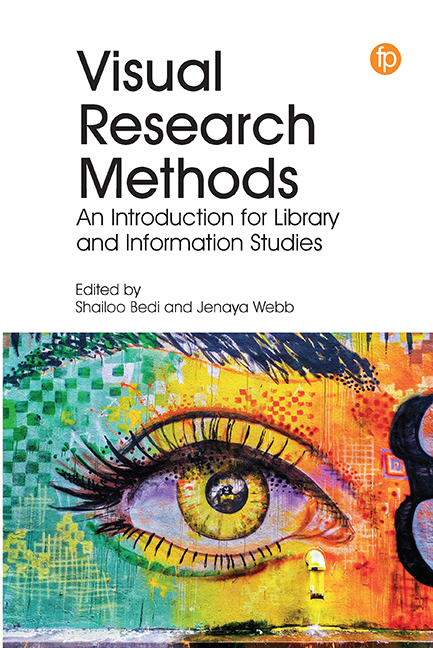1 - A Brief Introduction to Visual Research Methods in Library and Information Studies
Published online by Cambridge University Press: 07 November 2020
Summary
Introduction
Described simply, visual research methods are research techniques that use visual elements such as photographs, maps, video and other artistic media – drawings, paintings and sculptures – in the process of answering research questions. Although this definition seems simple, scholars undertaking using visual methods may easily become lost or disoriented in the diversity of visual options that abound or the inconsistencies across the literature in the terms we use to describe visual research methods (Hartel and Thomson, 2011; Pollak, 2017). Perhaps it is because of the wide range of visual research methods or the inconsistencies in how they are described and discussed, that LIS researchers and those across other disciplines can face challenges in ‘discovering visual research options and deciding which ones best suit their goals’ (Pollak, 2017, 99).
When we talk about visual research methods in this book, we are talking about methods in which the visual element (photo, film, drawing or otherwise) is part of the research process of gathering or generating research data. We are not talking about data visualization or the use of visuals (such as infographics) solely to present research results. Certainly, visual research methods might cross over with visualizations, even in the same study. For example, Elizabeth Tait's chapter on 3D visualization (Chapter 4) covers data visualization, but as part of the participatory community research process itself. Though we recognize that visualizations are an important research dissemination tool in LIS and other fields, we do not address them here.
Anchored in the LIS literature, this chapter addresses definitions and terminology and presents several existing frameworks to help clarify and facilitate the discussion about visual research methods. We begin by addressing the question of method versus methodology, then briefly discuss terminology and guiding structures. We will outline the emergence of visual research methods in LIS, highlight some recent examples, and discuss the benefits and limitations of visual research methods that have been documented by researchers in the field. It is worth repeating here that we situate ourselves and this book within the qualitative paradigm. The works discussed here focus on social sciences approaches to visual methods.
- Type
- Chapter
- Information
- Visual Research MethodsAn Introduction for Library and Information Studies, pp. 3 - 28Publisher: FacetPrint publication year: 2020
- 2
- Cited by



